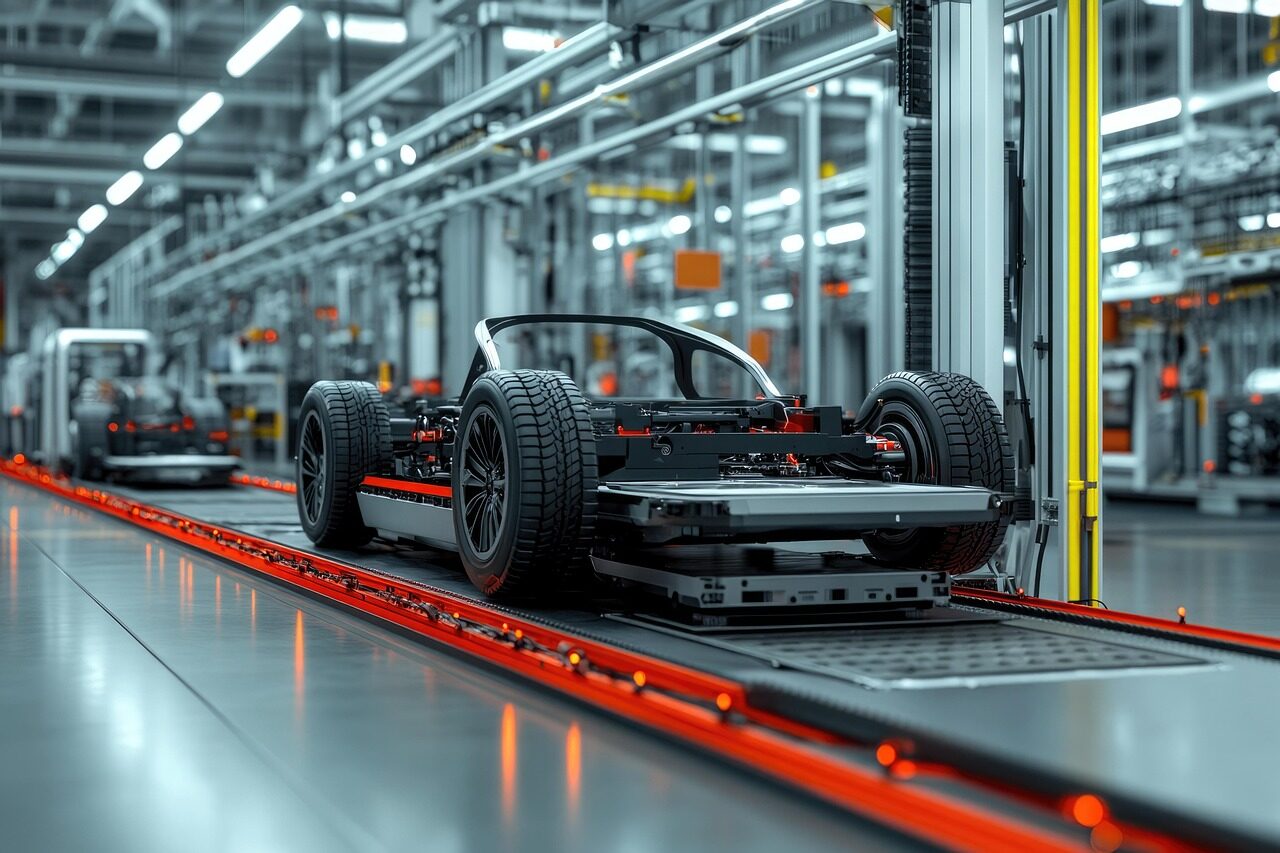1. Voice Assistants as the new interface
The automotive industry is making significant strides in convenience and connectivity through in-car voice assistants, benefiting both drivers and passengers. A growing number of users rely on voice technology in their vehicles, and automakers are heavily investing in custom, branded assistants to enhance the user experience.
These AI-driven systems allow for seamless interaction with vehicle functions, from navigation and climate control to media and smart home integration. As automakers continue refining these capabilities, voice assistants are set to play a crucial role in improving driving safety and enhancing the in-car experience.
According to research by VoiceBot.ai, the number of U.S. adults using in-car voice assistants rose by 13.7% between September 2018 and January 2020, reaching 129.7 million users, with monthly active users growing to 83.8 million. Expect that to significantly increase this year.
2. The acceleration of autonomous driving
Autonomous vehicles (AVs) have long been a subject of speculation, and while their development has been slower than initially expected, 2025 is poised to be a turning point. Advances in artificial intelligence, sensor technology, and computing power are fueling the next wave of driverless innovation.
The global market for autonomous vehicles is projected to grow from $60.3 billion in 2025 to $449 billion by 2035. However, public acceptance remains a hurdle. A Pew Research study found that 44% of Americans view self-driving cars negatively, though younger generations are more receptive. To foster trust, automakers must prioritize safety, transparency, and real-world demonstrations of AV capabilities. Proponents argue that widespread adoption could save thousands of lives annually by reducing human error on the roads.
3. The rise of electric vehicles (EVs)
Electrification continues to reshape the automotive landscape. EV adoption is surging due to consumer demand, government incentives, and technological improvements. In 2025, Deloitte estimates that between 18% and 36% of all vehicles sold will be electrified, including battery electric vehicles (BEVs), plug-in hybrids, and hydrogen fuel cell vehicles.
EVs could account for over 20 million sales globally by 2025, potentially comprising 23% of the light-vehicle market. Traditional internal combustion engine (ICE) vehicles are expected to decline sharply, with some markets—such as China, North America, and Germany—phasing them out entirely by 2030. However, infrastructure remains a challenge. Increasing the number of charging stations and reducing battery costs will be critical to mainstream EV adoption.
4. The surge of connected cars
The connected car market is experiencing rapid growth, driven by increasing consumer demand for enhanced in-car experiences, improved safety features, and better fuel efficiency. According to Allied Market Research, the global connected car market was valued at $115.8 billion in 2023 and is projected to reach $501.8 billion by 2033, growing at a CAGR of 16.5%.
Key factors fueling this expansion include advancements in 5G connectivity, the growing adoption of autonomous driving technologies, and stricter government regulations on vehicle safety. Automakers are also forming strategic partnerships with tech companies to integrate advanced telematics and connectivity solutions, further accelerating market growth.
5. AI-driven automotive innovation
Artificial intelligence is revolutionizing every aspect of the automotive industry. From manufacturing and supply chain optimization to in-car experiences, AI is a game-changer.
Inside vehicles, AI powers advanced driver assistance systems (ADAS), voice recognition, and adaptive infotainment. Outside the vehicle, AI-driven tools are streamlining dynamic pricing, customer engagement, and predictive maintenance. The global automotive AI market is expected to reach $200 billion by 2032, making it a central pillar of future automotive advancements.
6. Growth of subscription-based car ownership
New research from PwC UK finds that nearly half of consumers would be interested in a subscription service for their next vehicle, with demand largely driven by younger customers, particularly for premium and luxury brands. Subscription services offer a flexible alternative to traditional ownership, allowing drivers to access the latest cars and technology with lower upfront costs and the ability to switch models at short notice.
Unlike leasing, subscription services provide all-inclusive packages that often cover insurance, digital services, maintenance, and roadside assistance, making car ownership more budget-friendly and convenient. PwC’s research indicates that 44% of consumers planning to buy a car in the next five years would opt for a subscription over a traditional purchase or lease, while an additional 5%—who might not have considered purchasing a car—would be drawn in by the benefits of subscriptions.
7. Vehicle-to-everything (V2X) communication
The global automotive V2X market is growing, with a valuation of $19.94 billion in 2024 and a projected compound annual growth rate (CAGR) of 42.2% from 2025 to 2030. Governments worldwide are investing in road infrastructure improvements and implementing regulations to encourage the adoption of V2X technology, further fueling market growth.
V2X enables real-time communication between vehicles, infrastructure, and other road users, improving road safety, traffic efficiency, and the development of intelligent transportation networks. Automakers are integrating advanced safety features that comply with evolving regulations, ensuring safer and more efficient roadways. As technological advancements continue, V2X will play a crucial role in reducing collisions, mitigating congestion, and enabling the next generation of autonomous vehicles.
8. Advancements in hydrogen fuel cell technology
While EVs dominate, hydrogen fuel cells are gaining traction as an alternative for long-range commercial transport. The global hydrogen fuel cells market is experiencing significant growth, with a valuation of $5.23 billion in 2025 and an expected expansion to $27.49 billion by 2034, driven by a CAGR of 20.24%. North America currently leads the market, holding 47% of the global share in 2024, while Asia-Pacific is expected to grow at the fastest rate.
Advancements in hydrogen fuel cell technology are making them a viable alternative to traditional internal combustion engines, particularly for long-haul and heavy-duty transportation.
9. Smart manufacturing and supply chain resilience
Supply chain disruptions have plagued the auto industry in recent years, prompting manufacturers to rethink their strategies. Companies are diversifying suppliers, integrating AI-driven logistics, and embracing sustainable sourcing practices to mitigate risks.
A survey by SAP revealed that 42% of auto executives consider supply chain improvements a top priority. Automakers like Renault are leveraging AI-powered analytics to optimize procurement and production efficiency. Sustainable practices, such as closed-loop recycling and renewable materials, are also becoming central to supply chain strategies.
10. The role of smart cities in automotive evolution
As urban centers become more connected, smart cities are reshaping the way vehicles interact with infrastructure. Cities like San Francisco, Phoenix, and Beijing are pioneering autonomous mobility, integrating driverless taxis into their transportation networks.
By 2030, up to 40% of urban traffic could be autonomous, with one in three kilometers driven involving shared mobility concepts. This transformation will influence vehicle design, urban planning, and regulatory frameworks. Automakers must align with smart city initiatives to stay competitive in the evolving mobility ecosystem.
The automotive industry is evolving fast, and hiring managers need to keep up. With AI, electrification, cybersecurity, and autonomous tech on the rise, finding the right talent is more crucial than ever.
Talent Traction: Your Automotive Recruitment Partner
At Talent Traction, we specialize in connecting top-tier talent with leading automotive companies. As the industry evolves with advancements in electrification, autonomous technology, and AI-driven innovations, the demand for specialized professionals has never been higher. That’s where we come in.
With deep expertise in automotive recruitment, we help hiring managers find the right candidates for critical roles across engineering, manufacturing, supply chain, and leadership.
Why Partner with Talent Traction?
-
Industry Expertise: We understand the automotive landscape and the skills needed to drive innovation.
-
Access to Top Talent: Our vast network connects you with highly skilled professionals ready to make an impact.
-
Tailored Recruitment Solutions: From contingent hiring to executive search, we customize our approach to fit your needs.
-
Speed & Efficiency: In a competitive market, we move fast to secure the best talent before your competitors do.
As the automotive sector transforms, having the right people in the right roles is critical for success.
Let Talent Traction help you build a future-ready workforce that keeps you ahead of the curve.




